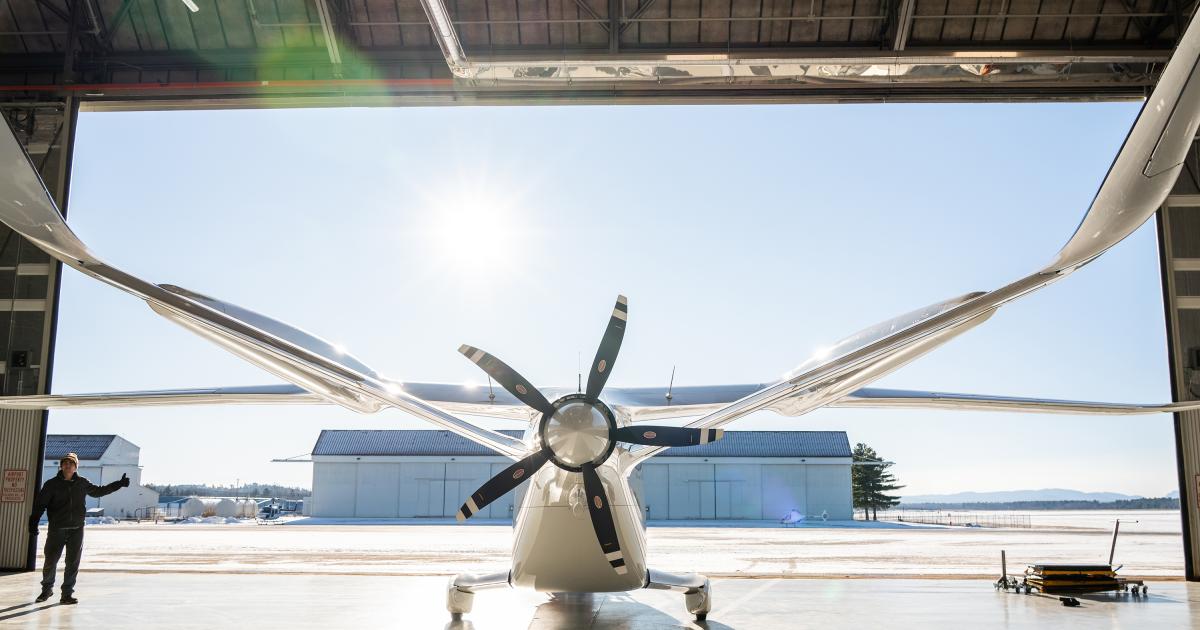Hartzell Propellers revealed on Monday it has received Part 35 type certification from the FAA for a new prop designed specifically for electric and advanced air mobility (AAM) aircraft. The approval makes Hartzell the first company to achieve such a milestone.
Developed in cooperation with BETA Technologies, the five-blade, carbon fiber propeller underwent thousands of hours of ground and flight testing on BETA’s in-house electric propulsion systems, according to Hartzell. Over the past four years, BETA has used Hartzell’s propellers in both the Alia CX300 and Alia 250 eVTOL aircraft. The testing includes a cross-country trip and a tour across Europe for the CX300. BETA will use the new propeller in certification testing for both aircraft, but Hartzell said the propeller is designed to serve all AAM aircraft that operate similar electric propulsion systems.
Hartzell, the Ohio-based propeller manufacturer, first entered the AAM business in 2018, entering a partnership with Eviation to develop its electric commuter airplane, Alice. The newly certified prop is expected to be a high-performing, low-noise propeller tailored for electric engines.
Hartzell considers this certification a turning point for the AAM industry at large as the FAA put its endorsement behind both Hartzell’s propeller and BETA’s electric engines.
Hartzell Gets FAA Nod For First Electric Aircraft Propeller
Five-blade, carbon fiber prop is designed for electric and AAM aircraft.



Congratulations to Hartzell for the approval of their new product by the authorities! It is known electric and advanced air mobility (AAM) aircraft rely heavily on propeller propulsion. Therefore importance of the achievement is most evident.
It is known too that presently, the main problem in the AAM industry is to design propellers which can fulfill the requirements of the tiltrotor aircraft. Crashes and loss of life testify that rotors and propellers capable to perform well in regimes of both helicopter and cruising flight, are missing today.
Although concept of the suitable adaptive devices has existed for some years now, it is beyond question that the final solution must come from propeller experts. Experts like Hartzell.
I would like to know what are the design considerations that make electric aircraft propellers different. This article was kind of a tease. Five-bladed carbon-fiber? Adjustable pitch? Constant Speed? Do tell!